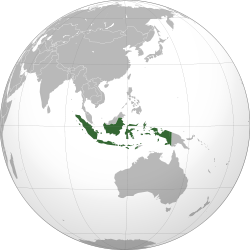The Banning Of The Ahmadiyah In Indonesia – Analysis
By IPCS
By Tri Susdinarjanti
Mirza Ghulam Ahmad founded the Ahmadiyah movement in India in 1889, and his teachings gradually spread to different parts of the world. The teachings of Ahmad gradually spread to different parts of the world. In Indonesia, there are two groups of the Ahmadis. One is the Gerakan Ahmadiyah Indonesia or Indonesian Ahmadiyah Movement founded in 1930, which puts forward only Ahmad as the Mujaddid or reformer, and not as a messiah. The other is Jemaah Ahmadiyah, founded in 1953, which believes that Ahmad is a messiah who came after Prophet Mohammad. The presence of both groups in Indonesia created controversy, particularly among other Islamic groups, resulting in the expulsion of the leader of the Indonesian Ahmadiyah Movement from Muhammadiyah – one of the larger Islamic groups in Indonesia. Jamaah Ahmadiyah has also been targeted recently, either by Islamic hardliners, or the state through regulations. In 2011, the group suffered from various violent attacks carried out by Indonesian paramilitary groups and was not granted any protection by the state apparatus.

Moreover, the sect was officially banned through a Joint Decree signed on 9 June 2008. The decree severely curtails the freedom of the sect and its members. For instance, the second point of the Decree prohibits Ahmadiyah members from the interpretation and practice of activities that deviate from the fundamental teachings of Islam. The decree also states that those who ignore the warning would be punishable under law. As a result of the decree, local authorities have tried to limit the Ahmadiyah’s activities in several areas in Indonesia. They have ordered the Ahmadis to take down signs that indicate their mosques and schools and encouraged other Islamic groups to re-educate and re-integrate the Ahmadis within mainstream Islam. Local authorities have also notably encouraged other people in the area to monitor the activities of the Ahmadis.
The Decree has provided justification for the misconduct of the state apparatus towards the Ahmadiyah, especially at the time of its implementation. The failure of the state to protect the Ahmadis from violence reflects its failure to protect the religious freedom of its citizens. The current situation has been relegated to one of state-sponsored violence against the Ahmadis. The strong influence of the Islamic hardliners on the Ministry of Religion and its policies and actions has contributed immensely towards this. As far back as 1980, the Majelis Ulama Indonesia (MUI) or Indonesian Ulema Council issued a fatwa against the Jamaah Ahmadiyah denouncing them for deviating from fundamental Islamic teachings. The fatwa was reinforced in 2005, and the MUI officially asked the government to ban the spreading of Ahmadiyah’s teachings, freeze the organization and close all the Jamaah’s activities.
The use of violence, especially one that is state-sponsored, against the Ahmadis, is a very recent trend. It raises several questions: Why is the Jamaah Ahmadiyah being targeted right now? And in comparison to other sects, what makes the Ahmadiyah more politically important for it to be banned? In the Indonesian political context, the New Order (1966 to 1998) predominantly targeted two groups – the communists (left wing) and Islamic groups (right wing). It was only in the 1990s that Suharto as president during the New Order started to engage with the Islamic groups. The growing influence of the ICMI (Indonesian Moslem Scientist Association) on the government can explain this development. The influence stayed strong when BJ Habibie took over as president from Suharto after the 1998 political reforms. However, their influence has faded substantially and unfortunately replaced by the presence of some hard-line groups such as the FPI or Islamic Defender’s Front.
The FPI was accused of being responsible for the violent attacks on Jamaah Ahmadiyah. The group reportedly has links with the military and this is a worrying development for the society due to the FPI’s tendency for perpetrating violence. The FPI has, in fact, become a major threat to the practice of multiculturalism and religious freedom in Indonesia. For example, in June 2008 the group also carried out attacks against supporters of multiculturalism during a campaign organized by the National Alliance towards Religious Freedom and Belief. Despite the 1998 political reforms, it seems that the Indonesians (still) have to bear with paramilitary groups that are used by certain groups to further their political interests. And unfortunately, it is the fate of Jamaah Ahmadiyah to be used as a political scapegoat.
Tri Susdinarjanti
Research Intern, IPCS
email: [email protected]

Ahmadis are non muslims, they are not a sect of Islam or Muslims-They are allowed to practice their religion like other religious minorities (Jews,Christians, Hindus Budhists etc.)in a Muslim country. It is happening in Pakistan since 1977 when Ahmadis (all branches and sub-divisions) were declared Non-Muslims. They are treated like other religious minorities. The trouble starts when they use the word Islam for their religion.